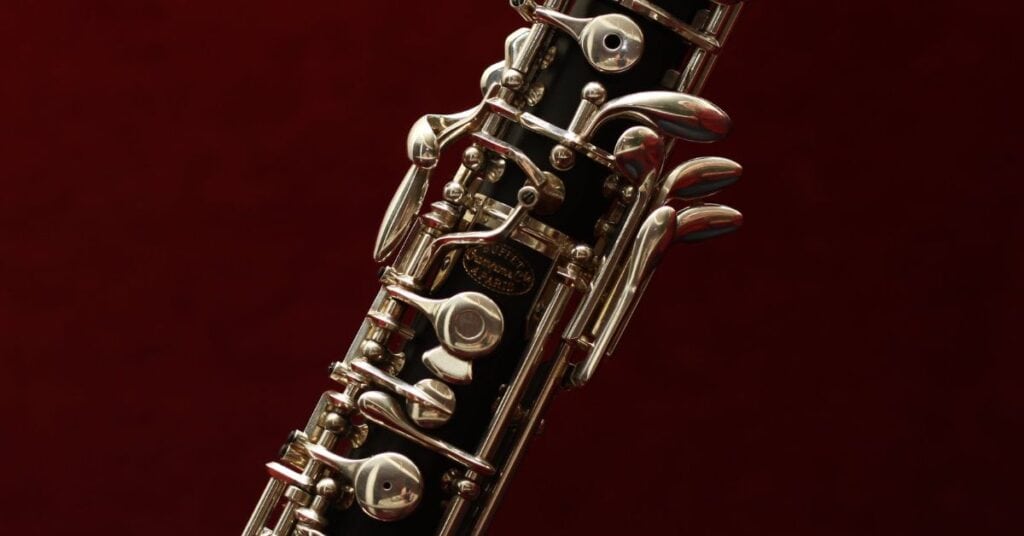Do you wish to know if the English horn is tuned lower than the oboe? Yes, from online research, I discovered that the answer is Yes: the English horn is lower in pitch than the oboe. The English horn can be defined as double-reed woodwind instrument in the key of F, whereas the oboe is in the key of C.
This implies that when both instruments play the identical written note, the English horn sounds lower. The English horn is noted for its rich, warm, and mellow tone, and it is frequently employed to bring depth and color to symphonic and chamber music.
Read more article here:What Is A Trill On Oboe?{ Easy vs Hard method}
Let us go deeper:
What Is The English Horn Tuned To?
The English horn, commonly known as the cor anglais, is a two-reed woodwind instrument in the key of F. This implies that an English horn playing a written C sounds like an F. It is tuned one-fifth lower than the oboe, which is in the key of C.
The English horn is more prominent and has a unique, mellow tone that lends depth to an orchestra’s woodwind section.
What Is The Lower Version Of The Oboe?
The English horn (or cor anglais) is the lowest-pitched instrument in the oboe family, not to be confused with the oboe d’amore or oboe da caccia, which are less frequent varieties. Because the English horn is tuned in F, it is bigger and lower in pitch than the regular oboe, which is pitched in C.
It has a characteristic, mellow tone and is frequently employed in symphonic and chamber music contexts for its rich, expressive capabilities.
Is The Oboe Low Or High Pitch?
The oboe is a high-pitched instrument. It is a soprano or treble instrument in the woodwind family. The standard oboe is pitched in C and has a bright and piercing sound. Its higher register is particularly distinctive and can cut through the sound of an orchestra or ensemble. The English horn, on the other hand, is a lower-pitched instrument within the oboe family, pitched in F, and has a mellow and rich tone in comparison to the standard oboe.
Can Oboe Players Play The English Horn?
Oboe players can often learn to play the English horn, as there are many similarities between the two instruments.
Both the oboe and the English horn use a double reed, have a similar fingerings system, and share some standard techniques and principles. However, there are some differences in the embouchure and air support needed to produce the unique sound of the English horn.
Because the English horn is a staple instrument in the woodwind section, many oboists prefer to double on it and may be compelled to do so in symphonic settings.
Oboists who also play the English horn frequently swap between the two instruments during a concert or in an ensemble. It is crucial to note that while an oboist may learn to play the English horn, mastering its tone and subtleties may need considerable effort and study.
Is The English Horn Hard To Play?
The English horn, also known as the cor anglais, is moderately challenging to play. It uses a double reed and requires reasonable embouchure control, finger technique, and careful tone production. Navigating its limited range and reed maintenance can also be challenging, making it a rewarding instrument for those who invest time and practice in mastering it.
Is The Oboe The Lowest Woodwind?
No, the oboe is not the lowest woodwind instrument. The lowest-pitched woodwind mechanism is typically the contrabassoon or the bassoon.
The oboe is higher in pitch than both the bassoon and the contrabassoon. It’s important to note that the rise of woodwind instruments varies, and they cover a wide range, with devices like the piccolo, flute, clarinet, and saxophone being higher in pitch than the oboe, bassoon, and contrabassoon.
Is Bassoon Lower Than Oboe?
Yes, the bassoon has a lower pitch than the oboe. The bassoon is a two-reed woodwind instrument with a rich, deep, and resonant sound. It usually performs in the orchestra’s bass or baritone register.
The oboe, another double-reed instrument, plays in a higher range and has a brighter, more piercing sound. In orchestral music, these instruments are frequently employed together to produce a harmonic mix of timbres across different registers.
Is Cor Anglais Higher Than Oboe?
No, the cor anglais, also known as the English horn, is not higher in pitch than the oboe. The cor anglais is actually lower in pitch than the oboe. It is a double-reed instrument and is part of the oboe family, but it is pitched a perfect fifth below the oboe.
The oboe is typically in the treble or soprano range, while the cor anglais is in the alto or tenor range. The cor anglais has a mellower and more expressive tone compared to the oboe, and it is often used to provide a distinctive and mournful quality to orchestral and chamber music.
Read more article here:.How Much Does An Oboe Weigh In Pounds?{ Have you seen this}
Conclusion
Now that we have learned that the English horn is definitely lower in pitch than the oboe.
This pitch difference is an essential feature of these two woodwind instruments, with the English horn generating a more prosperous and mellow tone due to its lower tuning.
The two instruments’ different pitches allow them to complement each other in a variety of musical contexts, resulting in a harmonic and contrasting combination of sounds. When arranging compositions and picking the suitable instrument for a desired musical impact, performers and composers must understand this distinction.

